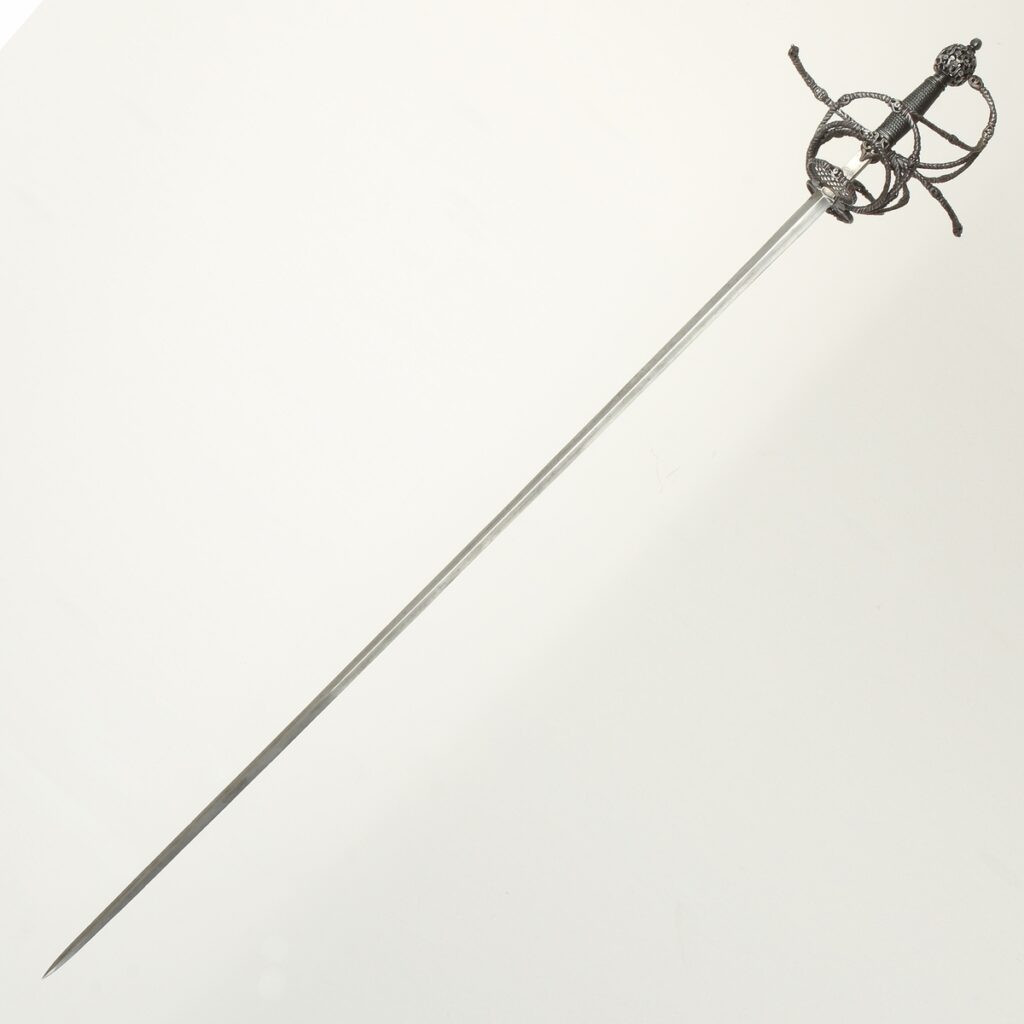
08 Rapier, Italy, c. 1620
Fotogalerie
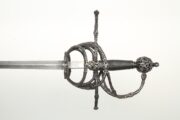

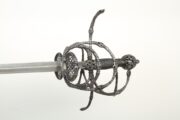
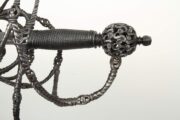
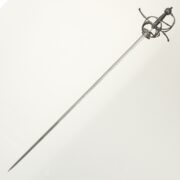
As early as the 15th century, sword fighting was sporadic in Spain and France. In the first half of the 16th century, reports were coming from France of the terrible consequences of the duelling frenzy which literally started to spread like plague during the reigns of Louis XII (1498−1515), Francis I (1515−1547) and Charles IX (1560−1574). In the second half of the 16th century, some 8,000 nobles died in duels in France in just twenty years.
In addition to the main weapons, a sword or rapier in the right hand and a dagger for the left hand, the swordsman was allowed to use a shield or cloak draped over his arm for protection. Both thrusting and cutting blows were valid and the sword was used primarily for offensive purposes. There were no positions for preparation or rest, various surprising turns and feints were allowed, and the opponent’s blade could be caught and thrown away with a simple flick of the left hand. The main emphasis was placed on the rapid alternation of surprising, lightning-fast actions and agility was the main secret of success. Precise rules were gradually developed for each of the fencer’s movements. They made perfect use of balance and worked out in detail the interplay of the legs and torso, the balancing of the movements of the right with the positions of the left hand, a system of steps according to the direction and length of the step, and the scale of the various positions of the rapier. The perfectly mathematically calculated system even determined the rotation of the fingers and fingernails of the hand during each movement.
The term rapier first appeared in a French document from 1474. It was suggested that it comes from the Spanish name for a dress sword, espada ropera. The rapier was first used in Spain and, taking a circuitous route through Italy, it soon spread throughout the rest of Europe. It was a civilian weapon of the nobility, used mainly in duels. However, in addition to this basic function, it was also a symbol of the owner’s social status and proof of his financial means.
Length 1 333 mm, blade length 1 168 mm, blade width 22 mm, weight 1 220 g.
Aktuálně

Urychlené vyzbrojování ČSLA v druhé polovině sedmdesátých let

Vyšlo čtvrté letošní číslo Historie a vojenství s hlavní studií o československém důstojníkovi vojenské zpravodajské služby OBZ Adolfu Püchlerovi

Poděkování za službu: Vojáci z misí po celém světě převzali ocenění na pražském Vítkově

Ve čtvrtek 27. listopadu v Armádním muzeu promítneme filmy z naší sbírky. Přijďte se podívat na díla později známých filmařů








